|
|
|
|
ISSUE 24 | NOV. 2021
|
|
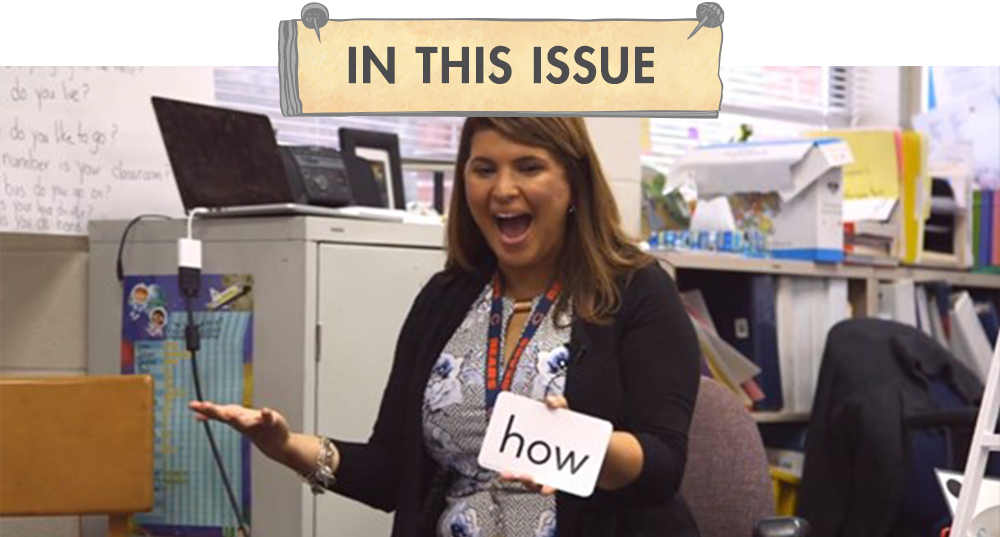
|
|
|
|
|
|
Superkids places an emphasis on developing the decoding habit. We want children to understand that there is a predictable relationship between letters and sounds, that they can “unlock” words by moving from left to right, and ultimately that they can apply and blend the letter-sounds they know with confidence.
But not every word in the English language contains regular letter-sound correspondences. Memorizing phonetically irregular, high-frequency words helps children develop fluency in both reading and writing. In this issue, we will explore how Memory Words are taught in Superkids, and we will check out some ideas for providing exposure and practice that classroom teachers have shared.
|
|
|
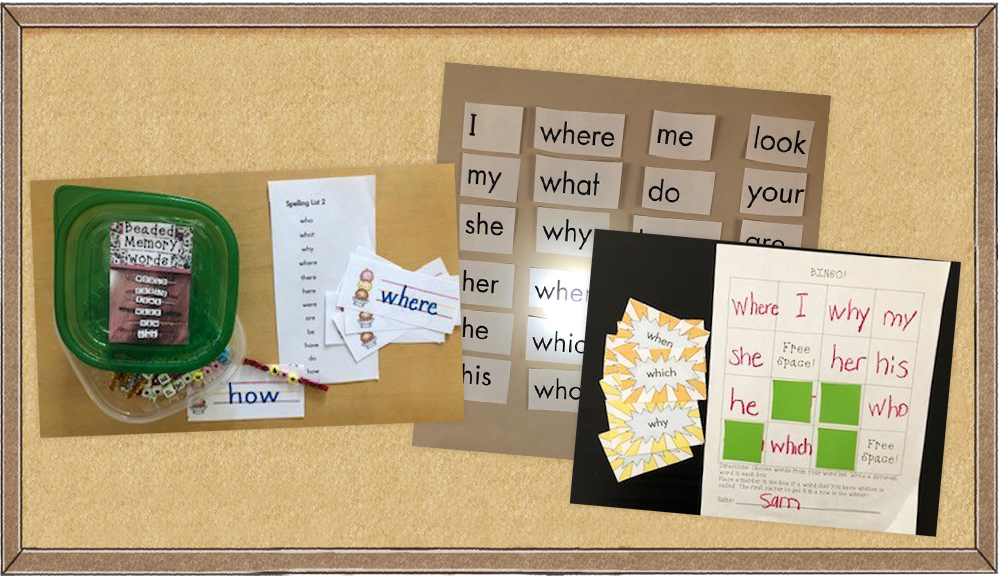
|
|
|
|
|
|
In kindergarten, the number of phonetically irregular words introduced is intentionally limited in Superkids instruction. Continued exposure to words that can’t be sounded out can derail confidence and can create a reader who uses guessing at words or partial alphabetics as a preferred strategy when encountering words they don’t know. We want kindergartners to develop and rely on a decoding habit.
In Superkids, kindergartners are explicitly taught 12 words from the Dolch list that are phonetically irregular or contain letter-sounds or spelling patterns children have not yet been taught. However, many high-frequency words on the Dolch list are decodable. By the end of kindergarten, children know letter-sound correspondences needed to decode and encode another 54 words from the list.
In first grade, explicit instruction and practice with Memory Words really take off! Children are introduced to 5–7 phonetically irregular, high-frequency words per unit. Daily practice with reading and spelling the new words is provided during Daily Routines and Word Work, and children are further exposed to the new Memory Words in the text they are asked to read. By the end of first grade, students can read, write, and spell all 220 Dolch words.
Second-grade Superkids instruction provides a review of the Memory Words that were introduced in kindergarten and first grade.
|
|

|
|
|
|
|
|
For students who have difficulty spelling and reading Memory Words, explore the Ten-Minute Tuck-Ins included in the lessons. You will frequently find activities that focus on providing exposure and practice with the Memory Words introduced in the unit.
Another excellent resource is the Superkids Skill-Building Book. A plethora of activities for skill reinforcement with Memory Words are found in the Fluency and Spelling sections of the book. Here are just a few fun activities for providing whole-group or small-group practice with Memory Words.
Pass the Flashlight
|
|
|
Arrange up to 12 Memory Word cards in rows. Say a word, hand a flashlight to a child, have the child shine the flashlight on the word, and then read the word aloud to the group. Have that child read a new word aloud. The next child will get the flashlight, shine it on the word that was read, and read it aloud. Continue until all the words have been read.
Silly Voices
|
|
|
When practicing reading Memory Words from a word wall, printed list, or flash cards, you can have children begin reading the words in a whisper and then get louder with each word. Or ask children to read the words using a different kind of voice, such as a robot voice, a squeaky mouse voice, or a loud monster voice.
Memory Word Riddles
|
|
|
Use the Memory Word wall to play a guessing game. Pick a word from the wall and give clues about the letters and sounds in the word. For example, say, “This word has three letters. It starts with /p/ and rhymes with foot.” Call on a child to point out the correct word on the wall using a fancy, fun pointer. Give clues about other words or have the child who identified the first word give clues for the next word.
Hot Potato
|
|
|
Have a group of children sit in a circle. Place a stack of Memory Word cards facedown in a small basket. Place an empty small basket beside the word card basket. Set a kitchen timer and have children in the circle take turns selecting a word card, reading the Memory Word aloud, then placing it in the empty basket when read correctly. When the timer goes off, the child who was last to turn over a card keeps the card. Return all cards to the Memory Word card stack and place facedown again. Play continues until all cards have been collected. The player with the fewest cards wins.
Spelling Chain
|
|
|
Say a Memory Word and use it in a context sentence. Have students take turns writing each letter of the Memory Word on the whiteboard. Subsequent writers can change a letter already written on the board if they think it is not correct and then continue to write their letter. When the word is completed, confirm as a group that the spelling is correct.
|
|

|
|
|
|
|
|
Superkids teachers love to share what is going on in their classrooms! Here are a few creative center activities teachers have shared to provide Memory Word practice during independent work time.
|
|
|

|
|
Letter Sticks
This teacher writes, “I provide letter sticks, clay to use for a base, and word cards with the Memory Words children have been taught during core instruction. Either they can re-create the words using the sticks and word cards, or they can have a partner read the word and spell it independently.” To create the letter sticks, she first glued laminated squares to the top of a large craft stick. She then added letter stickers to the squares.
|
|
|
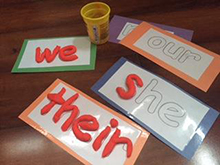
|
|
Clay Cards
For students who require more support when spelling Memory Words during independent work time, this teacher created these “clay cards” to provide them with the scaffold they need. She used the outline font to create the words on the cards and laminated each card. Students then use clay to re-create the words.
|
|
|
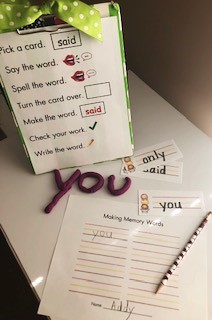
|
|
MORE Fun With Clay
For students who need practice with a little less support, check out this activity that provides Memory Word spelling practice. To start, the student selects a word card and then reads and spells the word orally. Next, the student turns the card over and creates the letters in the word using clay. When finished, the student uses the card to check their spelling and then writes the whole word on a recording sheet. To update this activity for each unit, the teacher only needs to provide Memory Word cards for the next unit.
|
|
|
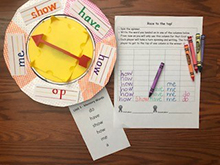
|
|
Race to the Top
For this activity, the teacher created a printable game board that can be used during any unit and a reusable spinner. One at a time, children spin the spinner and write the Memory Word they landed on in one of the columns. From then on, they will only use this column for that word. Each player will take a turn spinning and writing. The first player to get to the top of one column is the winner! To keep the station current, all the teacher needs to do is tape the current unit’s Memory Words to the spinner.
|
|
|

|
|
Building With Memory Words
Provide pairs of students with two sets of Memory Words sticks and two balls of clay. Children will work in pairs, but each will build a “Memory Word structure” of their own. Partners will take turns selecting a word stick and will read the Memory Word to their partner. The listening partner will write the word on a recording sheet. If the child spells the word correctly, they can use the word stick to add to their structure, using the clay to connect the sticks.
|
|
|

|
|
A Gem of an Idea
There are many classroom uses for the glass vase fillers sold at craft and dollar-type stores. One great idea is to use these gems as little magnifying glasses. Students can highlight Memory Words they encounter as they read Superkids text.
|
|
|
|
|
|
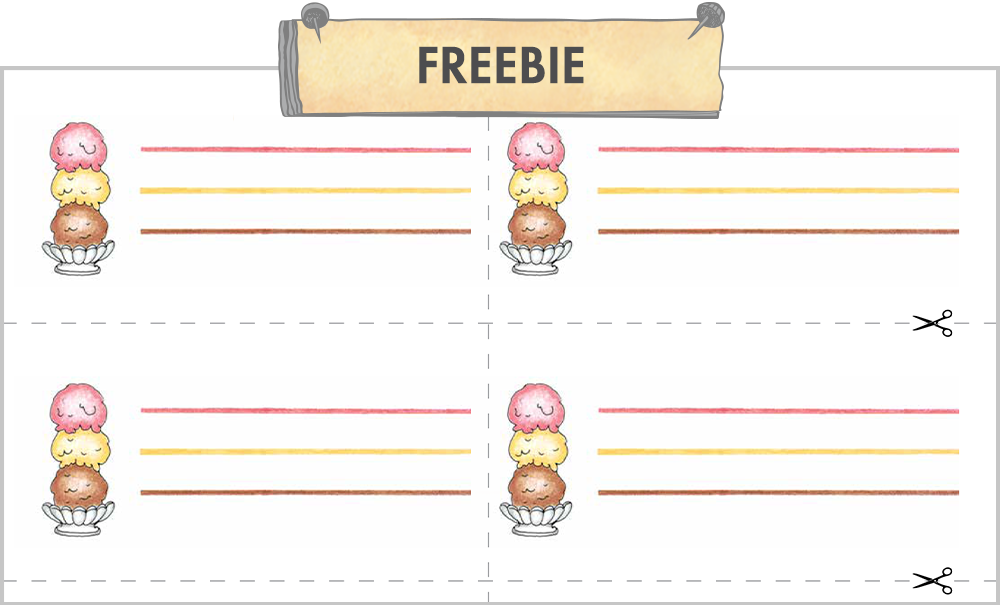
|
|
|
|
|
|
These printable cards with ice cream lines are perfect for creating word cards for small-group or independent activities that reinforce reading and spelling new Memory Words.
|
|
|
|
|
|
|
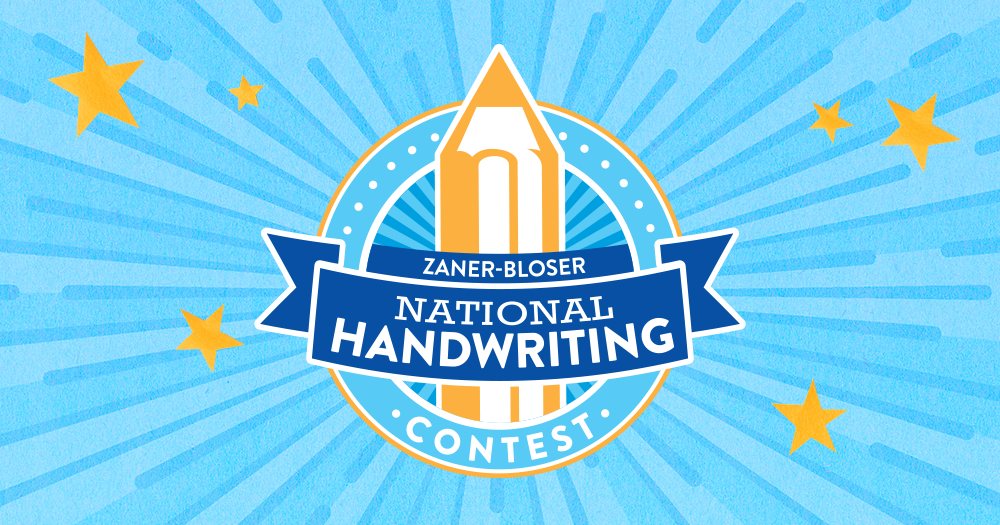
|
|
|
|
|
|
Did you know Superkids schools are eligible to enter the Zaner-Bloser National Handwriting Contest? Students can win trophies, cash prizes, school product vouchers, and bragging rights as the best writers in the nation. Learn more about the contest and be sure to download your entry pack today!
|
|
|
|
|
|
|
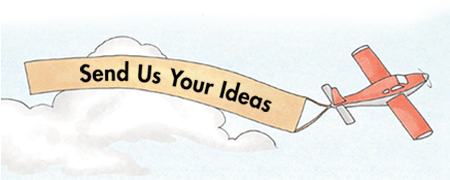
|
|
|
|
|